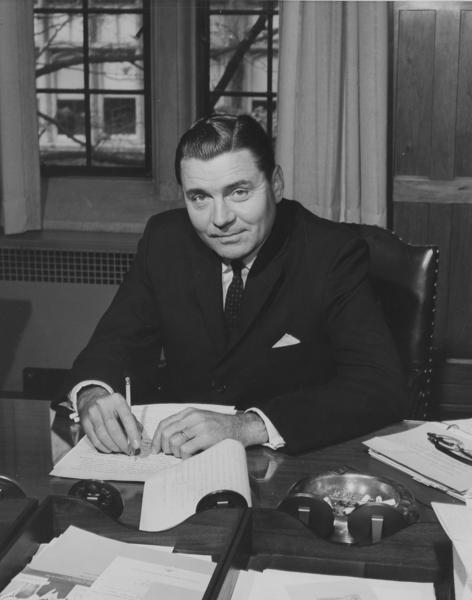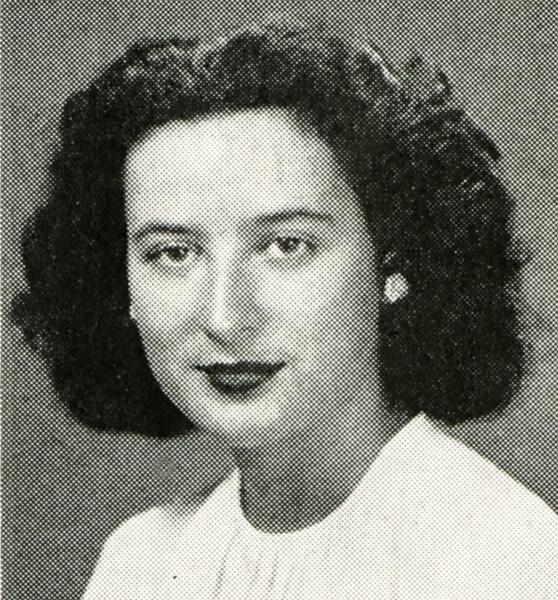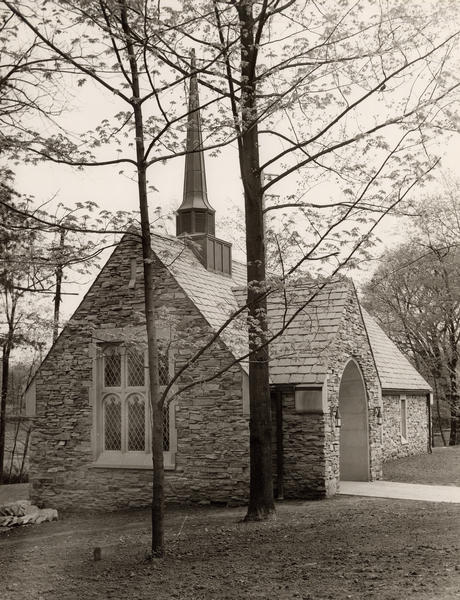Over the past few months, I’ve had the pleasure of processing two collections of oral histories: one of I.U. president emeritus, Elvis J. Stahr, and the other of Czechoslovakian refugee and I.U. alumna, Alice Field Ginott Cohn. Part of this task has involved segmenting and describing the various topics of discussion. Consequently, I’ve spent a lot of time – perhaps too much time – listening closely to what these folks have to say about their lives. Having worked with these two collections for some time now, I’ve been struck by how different these oral histories are in both form and content. Oral history, as a genre, is far broader than I had expected: it is not at all constrained to a particular style or methodology. As such, I think it’s worth discussing these two oral histories in more detail, that is, as two very different instantiations of the oral history genre.

Elvis Jacob Stahr Jr. was born in the small town of Hickman, Kentucky in 1916. He was a precocious boy, pressured by his mother to excel academically from an early age. And he did. He attended the University of Kentucky at the age of sixteen, where he was recognized for achieving the highest academic average in the university’s history. On top of that, he served in leadership roles for the tennis team, ROTC National Society of Pershing Rifles, and the Sigma Chi fraternity. He was named a Kentucky Colonel, the highest title of honor bestowed by the governor of Kentucky. He also received a Rhodes Scholarship, through which he studied law at Merton College, Oxford. He practiced law up until WWII, in which he served in the army as a lieutenant colonel. After the war, he became a professor of law at the University of Kentucky, eventually becoming dean of the College of Law. He then served in various positions in college administration and the US government, most notably as Secretary of the Army under John F. Kennedy. Eventually, he served as president of Indiana University from 1962-1968. Under his tenure, IU Northwest was established and the School of Library of Information Science was founded (woot woot), among other foundational developments. Stahr was also a staunch advocate for racial justice, and he engaged with Black activist groups on campus to create more a equitable environment for Black students (see the audio excerpt from tape 35A below). After leaving IU, Stahr served as the president of the National Audubon Society. He died of cancer on Veterans Day, 1998, at his home in Greenwich, Connecticut.
“We’ve got to give a little extra — a leg up, so to speak — a little extra help — a little advantage, if you will — to the members of the Black race in this country, because for so long, they were held back. When people talk about equality of opportunity… it sounds good, but a race is not equal if one of the contestants starts half way around the track… They’ve got to get the same start, if they’re to have the same chance to win. For 200 years, the Blacks have never had a chance to start from the same starting line as the Whites. So, we gotta help ’em catch up.”
Elvis J. Stahr, 1989
Stahr began recording his oral history in 1989, with plans to adapt the tapes into an autobiography. The autobiography never came to fruition, but the result of this preliminary effort is a complete and extremely thorough account of his life. The collection consists of 44(!) double-sided tapes, each 1-2 hours in length. In fact, I have not yet finished processing this collection: as of writing this blog post, I have completed only 12 of these tapes, though I believe this has been enough for me to get a sense of Stahr’s character and the nature of his project. Perhaps when I finish processing these tapes, I will write another blog post solely dedicated to Stahr’s life and legacy. Regardless, on to his oral history.
It is staggering how much the man remembers about his life and the people he knew. He narrates his story in mostly chronological stages (e.g. boyhood, undergrad, Oxford, etc…), and he includes every detail he can remember in one stage of life before moving onto the next. Stahr speaks freely, guided only by notes to which he occasionally refers. As a result, his style of narration is meandering yet structured: he will often introduce a topic only to go on a tangent about something seemingly unrelated, but, somehow, he always winds up back at the original topic. I’ve come to understand that this is Stahr’s way of ‘setting the scene’ for the larger story at hand. It’s a highly effective storytelling method, but it can sometimes make my job difficult!

As for the content of the oral history, Stahr’s story is one of triumph and success, though it is told neither pretentiously nor arrogantly. On tape 12 side B, recorded on the eve of his 73rd birthday, he expresses gratitude for the privileges he’s been afforded and the success he’s earned (see the audio clip below). For that matter, he seldom speaks negatively about anyone in his life, and he is often exceedingly charitable towards those whom he does perceive as flawed. For example, he describes the “sincere arrogance” of his Oxford classmate Hugh Frasier, but acknowledges that “he deserved most of it,” since he came from a powerful family and went on to be a great war hero (Tape 12, side A, 29:20). Stahr’s magnanimity extends even to his own struggles and trauma. Stahr doesn’t dwell much on the negative aspects of his life, in fact he seems to consciously avoid discussing them. His father, for example, was an alcoholic, but Stahr is quick to change the subject the few times it comes up. These moments are striking considering how much he dwells on other, seemingly less important subjects. I can’t discern whether Stahr does this because he doesn’t want to relive those memories himself, or because he would rather devote his autobiographical project to celebrating success rather than lamenting hardship. In any case, Stahr’s oral history paints a decidedly positive picture of his life and those whom he knew.
“This is the eve of my 73rd birthday, and today I’ve been thinking not back but thinking contemporaneously about how very fortunate I am to have had a rich and varied and challenging and exciting and reasonably successful life. And today, to have such wonderful friends, such interesting work to do, such pleasant and comfortable living, such a remarkable family, such good prospects — who knows — but good prospects for a little more time on this Earth.”
Elvis J. Stahr, 1989
At the time of writing, as mentioned, I am still working my way through the Stahr interviews, but those that have been completed can be accessed in Media Collections Online at https://media.dlib.indiana.edu/collections/x920gn65x.

Alice Field Ginott Cohn, on the other hand, was born in Prešov, Czechoslovakia (now Slovakia), in 1925. She was adored by her father, though her mother seemed to care little for her. Like Stahr, Alice was bright from an early age, and she excelled during her rigorous education at Gymnázium. Before starting high school, however, she fled Europe with her family in November 1938, just before the outbreak of World War II. She arrived in America during the Great Depression with little money and minimal knowledge of English. Nevertheless, she attended American high school and learned English through the help of the daughter of some of her relatives. In 1943, her brother Rudy, whom Alice admired greatly, arranged for her to attend Indiana University through the same refugee scholarship that he had earned from the National Education Service. As a student at I.U., she majored in psychology, participated in one of Alfred Kinsey’s studies on women, and was elected president of a student organization dedicated to integrating Black students into campus life (Session 11). Below is an excerpt of Cohn detailing her activism on campus, which she describes as one of her greatest achievements:
“[Black] students still couldn’t live or eat on campus… but we made really a tremendous, tremendous fuss. Well, we started to socialize with the Blacks, and we held rallies, and we wrote articles for the paper… and the professors talked in their classes about it… And so, I feel it was my great achievement that by the time I left, in ’45, the Blacks were able to live and eat on campus. We integrated it. To me, that was the nicest thing I’ve done.”
Alice Ginott Cohn, 2006
After graduating, she taught professionally and attended graduate school at the New School for Social Research, receiving her PhD in psychology in 1959. She had a tumultuous marriage with Arthur Lasker, during which she had two daughters, Roz and Mimi. She eventually divorced Arthur and married the prominent child psychologist, Dr. Haim Ginott. Sadly, Haim died of cancer in 1973 after only four years of marriage. Alice grieved his death for over ten years, continuing the work that they had done together, which included Haim’s newspaper column and activism against corporal punishment (see the clip from Session 17, below). Eventually, in 1986 she married Ted Cohn, whom she met through the Young President’s Organization. Alice had a long career as a practicing psychotherapist and educator, and in 1992 she established the Alice Field Cohn Chair in Yiddish Studies at IU. She died in 2015 at her home in Manhattan.[1]
“Now, what we were doing in Alaska which I’m very proud of… they were passing a law to allow teachers to beat their children. To beat them. And so we went on television, we wrote articles, we really tried very very hard to have that law not pass. It didn’t pass, and a friend of mine in Alaska just wrote me that it’s still on the books: that teachers still cannot hit children. So that was a great accomplishment. The first great accomplishment was integrating Indiana University, so Blacks could eat and sleep on campus, and the other one was helping children not to get beaten by teachers.”
Alice Ginott Cohn, 2006
Alice Ginott Cohn’s oral history stands in stark contrast to Elvis Stahr’s in terms of both form and content. Like Stahr’s, Alice’s oral history is told mostly chronologically. But contra Stahr’s freeform approach, Cohn’s oral history is mediated by her granddaughter, Allegra Kaough (daughter of Mimi), over 17 sessions. As a result, Cohn’s narration never drifts too far from the topic at hand, as she is occasionally reined in by the interview-style format of the interaction. Allegra evidently has specific topics in mind for Alice to discuss, as she routinely asks about aspects of her daily life such as family, leisure activities, holidays, and food. To that end, it’s clear Allegra wants the discussion to be anchored in Alice’s own personal experience, as evidenced by a moment in Session 5.5, in which Allegra intervenes when Alice’s narration veers towards exposition of historical and political context. I’m not sure what the precise context was for the creation of this oral history, but the result of this project is an account of Alice Cohn’s life that is less thorough – finer details are sometimes missed due to guiding questions – but more succinct than Elvis Stahr’s.

The tone of Cohn’s history is strikingly different from the affectionate nostalgia of Stahr’s narration: Alice’s story is largely centered around the struggles she faced as a Jewish person, as an immigrant, and as a woman. Growing up during the rise of Nazism in Europe, Cohn experienced antisemitism throughout her childhood. In Prešov, Alice recounts, Jewish and non-Jewish communities were socially segregated (Session 3.5), and as her family fled Europe in response to increasing tensions, some once-classmates of hers (themselves non-Jewish) antagonistically inspected their luggage (Session 6). Although she avoided the Holocaust, she nevertheless faced challenges in America due to her immigrant status. As a “greener,” she felt unwelcome in America, even by the family members who had immigrated prior. Alice’s grandfather registered her under a new Americanized name, Alice Field, for fear that her birth name, Alice (IPA: [ɑlit͡se]) Grunfeld, would immediately expose her as an immigrant. This ultimately backfired, however, as Alice wasn’t aware of this change on her first day of school, and so she immediately felt singled out during roll call. In any case, the new name stuck. Alice felt extremely isolated throughout high school due to the language barrier, especially because she did not yet understand American humor (Session 7). Her accent was also a source of trouble: not only did a particularly hostile Latin teacher go on a tirade against Alice for her “improper” pronunciation, but she also was expelled from Montclair State Teacher’s College because administration felt that her accent would preclude her from finding employment as an English teacher. Further, even in America Alice was not immune to antisemitism. At IU, she felt that Frank O. Beck, for whom Beck Chapel is named, used his position as director of the refugee scholarship as an outlet for expressing his antisemitism (as told in the audio clip below).
“…it just so happened that the man who assumed the responsibility of our scholarships… really hated Jews, and was a great anti-Semite. And I think he did it to make our lives miserable. He made my life very difficult. I had to go see him, periodically, and he would make remarks like, ‘You know, if you were more religious people would have more respect for you;’ ‘you know, if you didn’t talk with your hands nobody would know you were Jewish.’ I said, ‘no, they think I’m Italian.’ Then we would have a fundraiser, and he would insist we come there. The humiliation… Did I want people to look at me and say, ‘poor Alice. We really bought a ticket to this dance so she could stay in college?’ No. I didn’t go… I came to the conclusion that he volunteered to do it because it gave him an opportunity to really make our lives miserable — to vent his antisemitism. He was a chaplain and he had a very wealthy wife, and she built a chapel for him. And it’s still there, the Beck Chap– I still remember his name — the Beck Chapel. A little man. Terrible. Had enormous power over us.”
Alice Ginott Cohn, 2006.
As for Alice’s struggles as a woman, although she admired her mother’s skill as a domestic housewife, Alice rejected her mother’s lifestyle because she saw how unhappy it made her. Alice preferred to pursue an education and a career for herself, but her mother never truly supported her. According to Alice, both her mother and her elementary-school teacher refused to believe that she was intelligent, which served as her motivation to pass Prešov’s highly competitive high-school entrance exam. Alice continued to face misogyny throughout her education, even in graduate school. A sexist member of her PhD thesis committee attacked her work during her thesis defense, which was “unheard of.” And at Alice’s PhD conferral ceremony, her mother said that she “saw the twinkle in [her] professor’s eye,” speculating that she got her degree by sleeping with her professor (Session 13). Her brother, Rudy, was the only one to congratulate her for her achievement. Overall, Alice faced injustice throughout her life, and she (thankfully) does not shy away from it in telling her story. Occasionally, she finds humor in recounting her hardship, but more often she describes these moments with the somber, matter-of-factness of one who feels powerless in a system that was built against her.
The entirety of Alice’s oral history can be found in Media Collections Online at https://media.dlib.indiana.edu/media_objects/sn00bq269.
In a way, it’s unsurprising that the oral histories of Elvis Stahr and Alice Cohn are so different. Elvis and Alice lived completely different lives, and so each person’s narrative is informed by different experiences, privileges, and contexts. For Elvis, a white, natural-born American, the world was his for the taking; but Alice had to struggle just to find a place in a world that was hostile to her in so many respects. But despite these differences in content and presentation, the way I engaged with each of these stories – the effect that the oral history genre has on the listener – was, surprisingly, the same. I felt a particular sort of empathy while listening to both histories, an empathy that feels more personal than what one gets reading a text or even watching a video recording. I think it’s in part because of the expressiveness of the voice. Unlike a written text, the voice is totally unambiguous in tone and inflection. The listener receives the affective weight of the speaker’s memories with full force – from the deepest sadness to the highest pride. But because of the lack of visual stimulus – or perhaps by virtue of it – the listener’s imagination fills in the gaps: we create our own characters and setting, informed by our own lives and experiences. I can see myself walking down Hickman’s Troy Avenue as Stahr describes the town; I can see the Statue of Liberty in the distance as Alice arrives in New York. The beauty of the oral history genre, then, is that it allows the listener to embody its subject, to inhabit the life of the speaker in a way that no other sort of historical record can. It’s only during breaks in the narrative – e.g. when Allegra asks a follow-up question, or when Stahr takes a moment to greet his cat (below) – that the listener is reminded of their own self-hood. It’s at these moments, I find, when the peculiar empathy of oral history hits the hardest.
“Anyway, um….Hello kitty cat.”
[1] The New York Times. “Alice Cohn Obituary.” 2015.
Leave a Reply